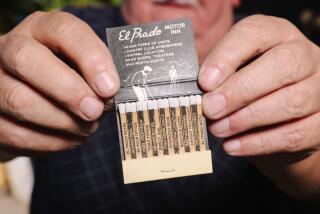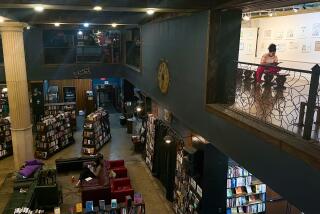HISTORY : Time Proves Bookcases Have Long Shelf Life
- Share via
Bookcases are almost as old as books. Archeological remains from earliest times suggest that clay and stone tablets were kept in some arranged order by their authors or collectors. But it was the increasing number of Egyptian scrolls or papyrus rolls dating from the 4th Century BC that necessitated a special place for storage.
The cylindrical shape of papyrus rolls made them easy to store on shelves. But the inconvenience of reading them--some were more than 100 feet long--led the Romans in the 1st Century to develop the square-shaped manuscript volume, or codex. The codex, with its folded sheets, stitching and binding, was the progenitor of the modern book.
The expense of books and bookcases in these early times meant their use was limited mostly to religious authorities. Before the invention of the printing press in the 15th Century, transcribing and binding pages of manuscripts were done largely by monks. The volumes then went to jewelers and goldsmiths for ornamentation. Finished with heavy covers and metal mountings, such books were weighty, necessitating sturdy storage spaces that often rivaled them in decoration.
The development of the printing press spurred a domestic need for bookshelves. Two distinct types arose: shelves built into the walls of libraries of the wealthy, and the freestanding piece of furniture, which became widespread after 1700. French designer Charles Andre Boulle (1642-1732) often is credited with devising the low bookcase. It typically was about 4 feet high, 5 to to 6 feet wide, with a marble top and doors fitted with wire lattice, behind which hung silk curtains.
It is less clear who invented the tall, enclosed bookcase. An early reference, however, points to a carpenter who worked with English diarist Samuel Pepys (1633-1703). “Comes Simpson the joiner,” wrote Pepys in his diary on July 23, 1666, “and he and I with great pains contriving presses to put my books up in: They are now growing numerous, and lying one upon another on my chairs.”
A century later, both short and tall bookcases were common. Often, they were ornately carved. For example, English cabinetmaker Thomas Chippendale (1718-79) described 14 models in his “Gentleman and Cabinet-Maker’s Director” (1766).
Sometimes the wealthy of this period kept small bookcases in the sitting room, conveniently housing just enough books so that a trip into the library wasn’t necessary. A small revolving bookcase, fixed on a drum table, arose for this purpose.
High, built-in bookcases that necessitated ladders or steps for users to reach the upper shelves led Benjamin Franklin (1706-90) to devise what he dubbed the “Long Arm”: an eight-foot stick of pine attached to a hooking mechanism controlled by a cord.
The 80-year-old Franklin described his 1786 invention in a letter: “Old men find it inconvenient to mount a ladder or steps for that purpose, their heads being sometimes subject to giddiness, and their activity, with the steadiness of their joints, being abated by age: besides the trouble of removing the steps every time a book is wanted from a different part of the library.”
By the 18th Century, another type of bookcase emerged: a secretary or bookcase desk that combined a writing area with space above to store a few books.
Over the next century, the technology of book production made them more affordable. Bookcases followed a similar trend. They became more widely available, with models designed to suit any purchaser’s fancies. In its 1897 catalogue, Sears, Roebuck and Co. advertised seven styles; six were secretary-bookcases, with the case either to one side of the desk or above it.
Prices ranged from $9.50 to $23. The costliest model, No. 9243, was described as “handsomely paneled and elegantly finished.” The seventh Sears bookcase was downright simple and cheap. Consisting of four adjustable shelves, the solid oak case was 4 feet 11 inches high, 32 inches wide and sold for $4.35. “The top of the case,” Sears pointed out, “is fitted with rods and rings for hanging a curtain to cover the books, keeping out dust and dirt.”
Throughout the 20th Century, bookcases have reflected their ties to history. Some have been built-in, wall-to-wall, highly ornamented models in private libraries; others have been more modest, with four, six or eight shelves. By the 1970s, some of these were sold unassembled to those who couldn’t afford fancier models.
And with the advent of lightweight paperback books after the 1950s, even the smallest bookcases could display volumes that, at least in number, could rival those of rich collectors.
More to Read
Sign up for our Book Club newsletter
Get the latest news, events and more from the Los Angeles Times Book Club, and help us get L.A. reading and talking.
You may occasionally receive promotional content from the Los Angeles Times.










